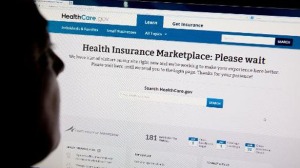Implementing reform of the Affordable Care Act has been a major point of interest in the media recently. There have some discrepancies between the different enrollment systems. Implementation on state level through state based exchanges has been going well since the opening on Oct 1. However at the federal level there have been many different issues with implementing the new reform and enrollment processes. At the state level there is better outreach, better functioning of the websites, more accessibility, and more direct help for coverage sign up. For example in Connecticut (my home state woohoo!) has had 4,418 enrolled in Connecticut as of a week ago, outpacing other states and the national enrollment.
This does not fair well for those living in states that have not opened exchanges. Altogether, 106,000 people have enrolled in health coverage nationwide last month, a figure far below administration projections.[1]
Check out CT’s user friendly site! http://learn.accesshealthct.com/events/
 <— The dreaded healthcare.gov!
<— The dreaded healthcare.gov!
What does this mean for the US? Although the Affordable Care Act is a federal program and reform for the whole country, there are many pitfalls to this system including the fragmentation of having state by state exchanges. It is still early in the reform implementation process to fully see how this all will unfold. However looking to other countries that have implemented reform successfully can be somewhat of an indicator. Health insurance design has a major impact on access, cost and the health of a country. Countries such as the UK and Canada which have no cost sharing have high rates of equitable access to care throughout the country no matter age or income level. Due to cost sharing the burden of cost is reduced and creates more access for low income patients to seek care without worry of the cost. With no limits on deductibles and complex insurance systems, the US has very low accessibility and high costs. The US is a unique country in that it creates disparities through both Medicare and Medicaid and poses a major challenge for equity promotion in the country.[2] This inequality is further exacerbated through the decision to implement state by state exchanges. There needs to be action at the state and federal level to better implement the reforms so that all Americans can gain the access they need to health care. The country is still at the inauguration of implementing the reform here in the US, hopefully the federal enrollment system will be able to distribute access to health care in a more equitable manner than we are currently seeing (for optimism sake!).
For more information and to follow the implementation timeline of the ACA check out http://kff.org/interactive/implementation-timeline/
[1] Levey, N. (2013) Healthcare plan enrollment surges in some states after rocky rollout.
http://www.latimes.com/nation/la-na-obamacare-increase-20131119,0,6486939.story#ixzz2lFQiSJEm
[2] Cathy Schoen, Robin Osborn, David Squires, Michelle M. Doty, Roz Pierson and Sandra Applebaum (2010) “How Health Insurance Design Affects Access To Care And Costs, By Income, In Eleven Countries” Health Affairs, 29.
